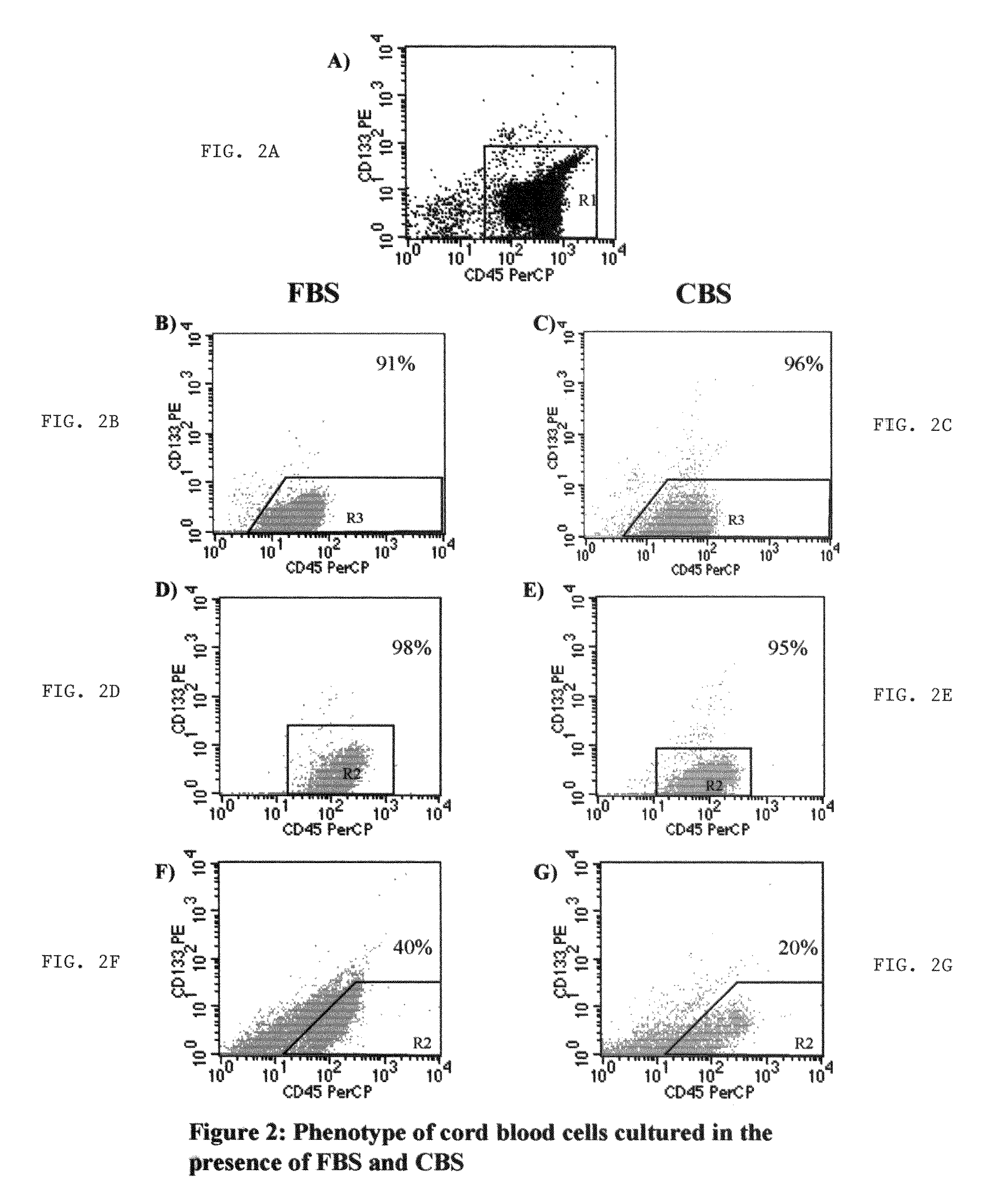Growth of neural precursor cells using umbilical cord blood serum and a process for the preparation for therapeutic purposes
a technology of neural precursor cells and umbilical cord blood, which is applied in the field of neural precursor cells growth using umbilical cord blood serum and a process for the preparation of therapeutic purposes, can solve the problems of inability to find suitable matching donors, and inability to achieve the effect of promoting growth
- Summary
- Abstract
- Description
- Claims
- Application Information
AI Technical Summary
Benefits of technology
Problems solved by technology
Method used
Image
Examples
examples
[0078]Example 1: Isolation of the mononuclear cell fraction from Umbilical cord blood: The umbilical cord blood was mixed with 3% sterile Dextran in a 1:1 ratio and allowed to stand for 30 minutes at Room temperature. The mixture was shaken intermittently after 30 minutes and again allowed to stand for 30 minutes. The Leukocyte rich plasma (LRP) was collected after RBC sedimentation. The LRP was spun at 1500 rpm for 5 minutes. Subsequently, the supernatant was decanted and the cell pellet was dispersed. The cell pellet was then suspended I sterile PBS and again spun at 1500 rpm for 5 minutes. The supernatant was decanted and the cell pellet thus obtained was then dispersed once again. This leucocyte pellet was then suspended in 35 ml sterile PBS.
[0079]For the separation of the mononuclear cells, 35 ml of the cell suspension was suspended in 12 ml Ficoll-Hypaque (density 1,077 gm / dm3). The tube was centrifuged at 1500 rpm for 30 minutes. The buffy coat (which contains the mononuclear...
example 3
Effect of cord blood serum on the proliferation of adherent cells
[0085]Mononuclear cells from umbilical cord blood were plated into a neural cell proliferation medium as described above. The cultures were fed every 3-4 days and were allowed to proceed to 90% confluency, which was determined by visual examination of the flask under an inverted microscope. The adherent cells were initially detached using cell dissociation buffer and seeded into the next passage.
[0086]Table-2 shows the numbers of cells detached with cell dissociation buffer in both these cultures. Cultures containing FBS showed a 1.7 fold higher number of adherent cells (p<0.05) as compared to cultures containing CBS. However since an appreciable number of cells were still adherent to the CBS tissue culture flask, it was decided to use trypsin-EDTA instead of cell dissociation buffer for detachment of cells.
[0087]In one experiment where cells were detached using trypsin-EDTA, cultures containing CBS showed a 2 fold hig...
PUM
| Property | Measurement | Unit |
|---|---|---|
| density | aaaaa | aaaaa |
| time | aaaaa | aaaaa |
| temperature | aaaaa | aaaaa |
Abstract
Description
Claims
Application Information
 Login to View More
Login to View More - R&D
- Intellectual Property
- Life Sciences
- Materials
- Tech Scout
- Unparalleled Data Quality
- Higher Quality Content
- 60% Fewer Hallucinations
Browse by: Latest US Patents, China's latest patents, Technical Efficacy Thesaurus, Application Domain, Technology Topic, Popular Technical Reports.
© 2025 PatSnap. All rights reserved.Legal|Privacy policy|Modern Slavery Act Transparency Statement|Sitemap|About US| Contact US: help@patsnap.com



